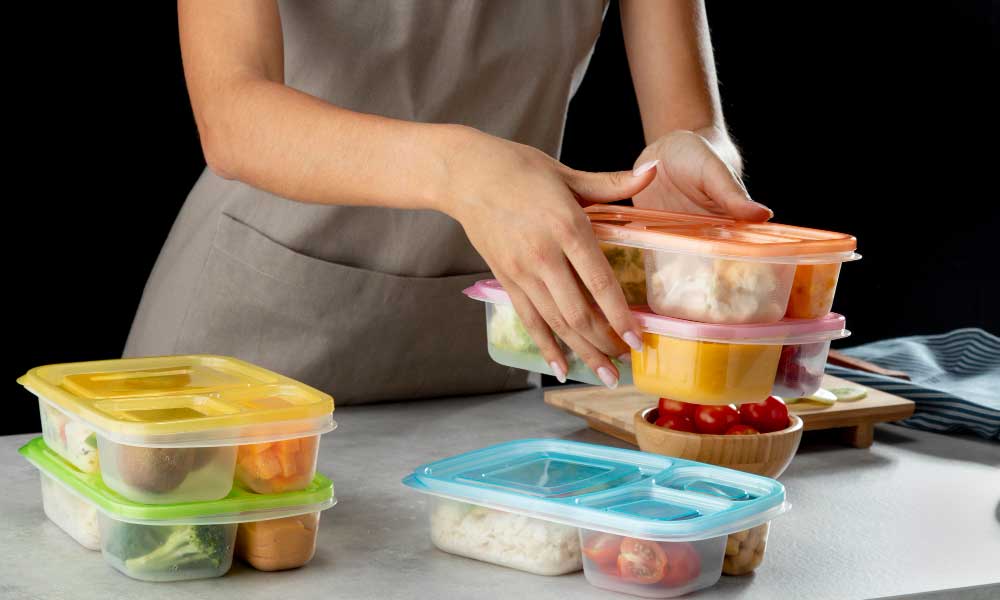Introduction to Meal Prepping
Meal prepping is more than just a trend; it’s a practical approach to simplify your day-to-day life, reduce stress, and ensure you’re making healthy food choices. Imagine having a fridge stocked with ready-to-eat or easy-to-assemble meals that align with your health goals. With a bit of planning and preparation, this can help you save time, cut down on food costs, and avoid unhealthy last-minute meal choices.
Why is Meal Prepping Important?
For those with busy schedules, meal prepping is an ideal way to reduce the time spent cooking daily. Not only does it offer convenience, but it also gives you control over portion sizes, food quality, and your overall nutrition. This is particularly useful if you’re working towards a fitness goal or trying to manage your diet more efficiently. Having meals ready to go allows you to stick to your healthy eating plan even on days when you’re feeling too tired to cook.
Getting Started with Meal Prepping
Starting with meal prepping may seem overwhelming, but with the right strategy, it’s manageable. Here are a few easy steps to help you begin:
- Plan Your Meals: Begin by deciding what meals you want to prepare for the week. Consider creating a menu that covers breakfast, lunch, dinner, and snacks. Choose recipes that can be easily stored and reheated.
- Shop Efficiently: Once you have a plan, make a list of the ingredients you need. Shopping with a list prevents impulse buys, helps save money, and keeps you focused on buying healthy options.
- Set Aside Prep Time: Designate a day for this purpose. Many people prefer Sunday or Monday. Use this time to cook, chop, and store meals for the week. Investing just a few hours can save you time each day.
- Invest in Quality Containers: Quality containers are essential for meal prepping. Look for glass containers that are microwave-safe, leak-proof, and divided for portion control. Proper storage keeps food fresh and makes portioning simple.
Benefits of Meal Prepping
Meal prepping has a variety of benefits that make it a valuable practice. Here’s a look at some of the most significant:
- Saves Time: With pre-made meals, you spend less time cooking during the week. This is especially helpful on busy days when you need a quick, healthy meal.
- Reduces Waste: This helps you use ingredients before they go bad, reducing waste and saving money.
- Supports Fitness Goals: Meal prepping lets you control portions and choose healthier options, essential for anyone focused on weight loss or muscle gain.
- Reduces Stress: Having a plan means no more scrambling to decide what to eat each day, especially if you’re aiming to eat healthily.
Types of Meal Prepping
There are several methods to consider, depending on your lifestyle and goals:
- Batch Cooking: Cook large quantities of a single meal and store them in portions for each day. This works well for foods like chili, pasta, or stir-fry.
- Ready-to-Cook Ingredients: Prepare ingredients (such as chopped vegetables or marinated proteins) and keep them ready to cook. This method offers flexibility while saving prep time.
- Assemble and Go: Prepare each ingredient separately and then combine them into meals when needed. It’s ideal if you want to keep things varied without fully cooking everything in advance.
Meal Prepping Tips for Success
If you’re new to meal prepping, these tips can help make the process smoother:
- Start Simple: Begin with a few meals for just a few days a week, then expand once you’re comfortable.
- Use Versatile Ingredients: Select ingredients you can use in multiple recipes. Chicken, vegetables, and grains work well for a variety of dishes.
- Organize Your Fridge: Label and date your containers, so you always know which meals to eat first.
- Try Different Flavors: Keep your meals exciting by experimenting with different spices, sauces, and marinades.
How to Keep Your Meals Fresh
Ensuring freshness is crucial to meal prepping. Here are some best practices:
- Store Smartly: Some foods are better refrigerated, while others freeze well. For instance, soups, stews, and rice dishes freeze well, while salads are best eaten within a few days.
- Keep Sauces Separate: If you’re preparing salads or stir-fries, store dressings or sauces separately to prevent your meals from getting soggy.
- Label Properly: Always label your containers with the preparation date, and consume meals within the recommended timeframe.
Common Meal Prepping Mistakes to Avoid
Even seasoned meal preppers can make mistakes. Here are a few to avoid:
- Preparing Too Much Too Soon: If you’re new to meal prepping, don’t cook for the entire week right away. Start with two or three days’ worth of meals to gauge what works best for you.
- Not Enough Variety: Eating the same thing every day can lead to burnout. Add variety to keep your meals enjoyable.
- Forgetting Nutritional Balance: Ensure each meal includes a good balance of protein, carbs, and healthy fats to meet your nutritional needs.
Conclusion
Meal prepping is a simple yet effective way to improve your eating habits and take control of your time and health. By preparing your meals ahead, you make it easier to stick to healthy choices and reach your wellness goals. Whether you’re new to the concept or looking to enhance your routine, the benefits of meal prepping are significant. Start small, stay consistent, and soon meal prepping will become a seamless part of your lifestyle.



